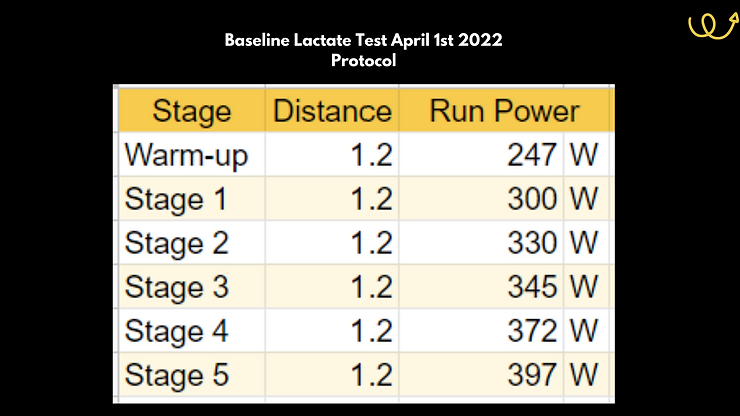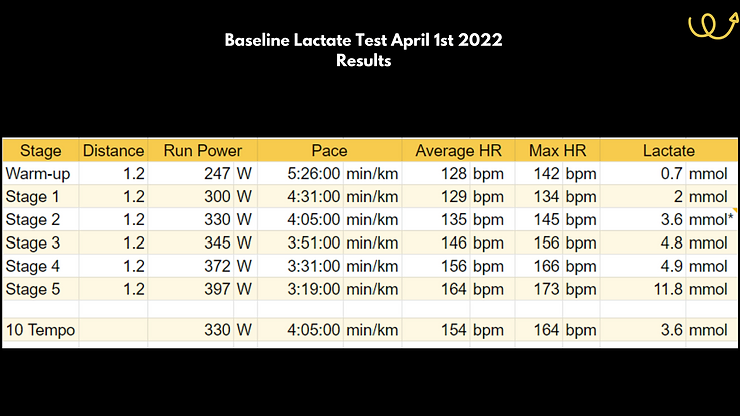Throughout my time in endurance sport and sports science, I’ve been a self-experimenter. I’m always keen to test out new methods of training and new ways to monitor training on myself to see whether there is any benefit to applying them to my athletes’ training plans. My latest interest is in lactate control training, an approach to training that uses lactate measurements to identify intensity.
While I’ve had a lactate meter for a couple of years, I’ve never really used it in a systematic way. Since I am currently building back from injury, I figured that now is a great time to begin a regimented lactate controlled training regime as I’ll be able to show some of the initial significant changes to my thresholds. This should help to convey the importance of lactate threshold(s) in relation to endurance training and performance.
So, what is lactate controlled training?
Lactate controlled training involves the correlation of certain lactate “thresholds”, i.e., points at which the blood lactate concentration shows a significant jump, with power output or speed. These can be used to create zones that can be used by the athlete for training.
There are various ways to use lactate control training including the Norwegian approach using double threshold days (as outlined by Maruis Bakken [here]), cluster training (Peter Coe), special block training (Renato Canova), HIIT science (Paul Laursen), and various works by Dr Andy Jones, Dr Stephen Seiler, and many others.
The process
As with any new training variable, benchmark testing was necessary to get an idea of how my blood lactate values correspond to run intensity. I followed a ramp protocol suggested by Dr Andy Jones, which involved running a 1.2 km (4-5 min) lap five times with power increasing each lap (from 300-397 W). The idea behind this was to identify the following:
Lactate threshold 1 (LT1): The initial point at which lactate increases above baseline levels, as seen by a jump in the blood lactate concentration from 0.7 to 2 mmol. This represents a transition from easy aerobic running to a low-end tempo/upper end aerobic capacity intensity and is often referred to as the “grey zone”
Lactate threshold 2 (LT2): Also known as the lactate turn point, this is what people are generally referring to when using the term “threshold”. It is the point at which blood lactate accumulates in the blood faster than it is removed and can be identified by a sudden sharp increase in blood lactate concentration.
The results:
- Lactate threshold 1 (LT1): about 300 W or 4:30 min/km.
- My lactate threshold 2 (LT2): about 370 W or 3:30 min/km.
I Should Have Warmed Up More
Being the first time I had conducted this test, I made a few mistakes that became apparent when comparing my heart rate with historical data
Mistake 1: I didn’t warm up for long enough. My heart rate stayed quite low (for me) until about stage 4. A few days prior to this test, I ran 5 km at 324 W with an average heart rate of 161 bpm, but, here, my heart rate didn’t get above 145 bpm at the same power output.
Mistake 2. The stages weren’t long enough. When exercising at a sub-threshold intensity, it takes about 3 min for your blood lactate concentration to reach a steady state (which is necessary if you want to relate blood lactate to a certain power output) (REF). However, if you want to measure an accurate HR response as well, you need to account for the longer duration needed for HR to reach a steady state (at least 5 min). Next time, I’d use a 1.5 km or ~7 min lap.
How does my lactate threshold compare to before I got injured?
This time last year, I ran 10 km in 32 min, averaging 396 W or 3:14 min/km, which would have been slightly above my LT2. I’m guessing my LT2 would have been around 3:20 min/km at the time. In this test, I was struggling at 397 W or 3:19 min/km. It is clear that my form wasn’t great either, because I was running at the same power output but going 5 sec/km slower.
What next?
For the next couple of weeks, I’ll do some threshold hill reps and flat tempo running to build my leg strength back without introducing an excessive amount of stress.
I’ll use these two thresholds to control the intensity of my efforts: 350-370 W for the hill reps (2min) and 300-330 W for the tempo sessions (10 min or 2-3 km). I plan to take lactate readings during these sessions to see how I’m tracking.
Follow my social media (IG, FB, Strava, YouTube) to keep up-to-date.
Come train with me!
My Faster with Data training group is designed for runners just like you. Runners looking for more than just a training plan – You want to know the why behind your training. Within my training plans, Facebook group, and live sessions, I give you the why!






